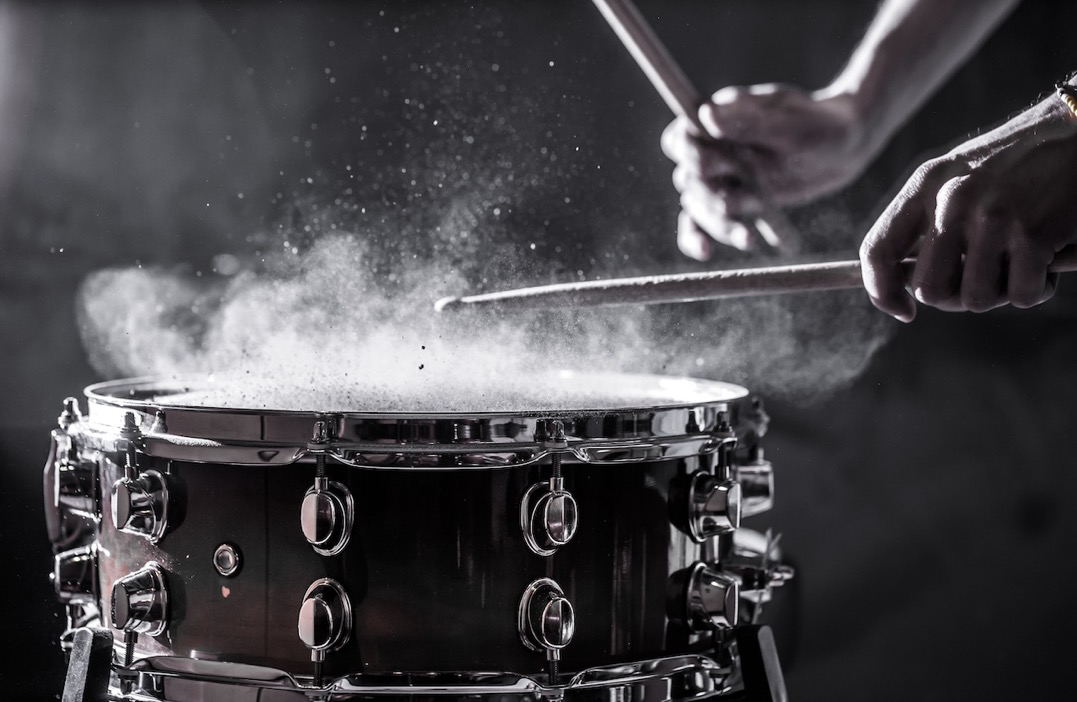MORE PUNCH! How to mix metal properly! - Workshop Part 1 of 3
It polarizes like no other genre of music, metal. Even at the mention of the word, many music listeners immediately shut up, as they usually have exactly the subspecies in mind that repels them the most, not knowing that the generic term metal covers an almost inexhaustible wealth of ultra-low-tuned, sluggish rhythms extremely catchy pop arrangements to rabbit fuck high-speed shredding with chipmunk vocals. However, there are some special features that underlie almost all metal music styles, which we want to take a closer look at in this workshop in order to avoid as many mistakes as possible in the next metal production and to tease the maximum out of one's abilities.

What is important in metal mixing?
Let me get this clear, metal is an art form that is not about artistic expression, but about the realization of music, using all the "artificial" means available on the market. One or the other will ask what is so special about it. Well, while electronic music, for example, never claims to be analogously reproducible in any kind of people via traditional instruments using "handmade music", the classic metal fan still assumes that in the studio or on stage 4- 6 musicians record with their instruments what they are serving up to the listener at that very moment. Adjust the volume a bit, and the album is finished. This means that all changes that are made in the sound material with regard to the arrangement and craftsmanship of the individual artists should, at least in theory, be feasible live, so that it always has an "honest" character for the fan. The fact that live is now even more deceived and deceived than in the studio because of the backing tracks is another matter.
The reality could not therefore be more diametrically opposed. It is true that in the field of metal, compared to other music genres such as pop, dance or electro, a comparatively large amount of craftsmanship is used, but the same is completely subordinated to the one and only maxim and this is PUNCH! The problem is that every music listener defines the same term differently, but one thing is for sure, there are some points that need to be considered or fulfilled that something like punch can arise. Let's see.
ATTENTION! In this article I will give my personal opinion and the experiences I have gained in my career as a producer and instrumentalist. It's in the nature of things that some styles / bands / approaches / definitions come off better than others. So if I step on a fanboy's toes in this article because I didn't appreciate his preferred style of music or, in his opinion, misinterpreted it, I'm sorry.
Mix metal – the band itself
For the sake of simplicity, we'll assume a classic metal line-up that was called V, 2x G, B, Dr.. 40 years ago and is still there today. We leave out the abilities of the musicians in the overall context or as individuals in the area of songwriting, because you could fill 10 workshops in this area alone and you wouldn't even have seen the tip of the iceberg. So we say that the band has agreed on one or more songs and that the music and lyrics are in place.
Now, to give the song any kind of punch, the most important thing is that the entire band has perfect (not good, but perfect!) timing. The reason is simple physics. Even if we leave out the vocals, which usually have a "narrative function" and can therefore act rhythmically more freely, a downbeat, an emphasis or a continuous rhythm only has a corresponding pressure if all musicians hit the downbeat in the millisecond range. Nothing makes a production more sloppy than when 4 musicians play their intonations at 4 different times. That's why practicing the metronome is an absolute must, especially in metal.
Just a quick reminder, yes I know the timing of some of the stars of metal was disastrous in their early days and I'm not just talking about Lars Ulrich (but he has an estimated net worth of around 350 Mio...) but it's 2022. Nobody with today's possibilities, it still forgives a hopping drum set, a sluggish bass or driving, up speeding guitars. And yes, of course you can jerk instruments these days, but few have any idea what a disastrous effect that can have on the overall sound. More on that later. A tip from my experience regarding practicing the metronome. I always have the best experiences for myself when I don't "practice to the metronome" but imagine that I have to "lead" the metronome (which of course is complete nonsense). When I play "along with" the metronome, most of my concentration goes into listening to the metronome. As a result, I'm totally in the beat, but play comparatively insignificantly and without attitude. But if I "lead" the metronome, the metronome keeps me on a leash in terms of timing, but I play much more expressively and better.
Mix metal – the drums
OK, I'll be honest, maybe 1% of all metal productions worldwide are still made with the drums according to the drum / cymbal - microphone - preamp principle. Why? Because the effort for a high-quality sound with an acoustic drum set is gigantic! Not only do you need a huge set of microphones with the appropriate input channels on the console or interface, no, you also need a drummer who plays fantastically and who combines craftsmanship with perfect timing. In contrast to mono signals such as guitars / bass, etc., drums are much more difficult to cut because, for example, cymbals overhang or you have double triggers.
Anyone who has spent a day just jerking kick and snare to a beat quickly loses interest in the work, although the automation of this work, which some programs offer, has never delivered an acceptable quality, at least for me. Not everyone has the nerve, like on Metallica's black album, to adjust the drums for a month so that one can speak of a rhythm. Add to that the fact that miking drums along with the guitar is the most complex task you can imagine in terms of sound. Just the crosstalk (bleeding) of the individual drums and cymbals requires a great deal of specialist knowledge, not to mention the right spatial sound. High-quality drum recordings cost a tidy five-figure sum in a regular rental studio, so that most bands cannot afford this recording method.
Mix Metal – Libraries and MIDI
Therefore, working with libraries, which can be used in 3 different ways, has prevailed at least in metal in recent years. About 50% of all metal productions are programmed with regard to the drums on the keyboard, whereby it usually makes a very big difference whether the drummer does it himself or some nose who thinks he knows how a drummer should play. If you take for example the currently leading platform Superior Drummer 3 and add the right library, it is no longer possible to distinguish whether the drums were recorded or programmed when heavy metal banging is involved, also due to the countless “humanize” options.
If you want to accentuate your personal touch even more, you have 2 more options to bring a good to very good sound to HD for a smaller budget. You can record the drums on an e-drum set in MIDI and take the respective library in the studio via MIDI signals, or you can play the drums regularly in a room that sounds as neutral as possible, but pay particular attention to high-end recordings of the cymbals and the hi-hat, while the drums are only used for later triggering of the library and are therefore treated rather neglected in terms of sound. The triggering of cymbals has always turned out to be a weak point, which is why you should focus on this, preferably with individual pickup of the cymbals / hi-hat plus overhead. Since dynamics are generally used very rudimentarily in metal (or are completely destroyed in mastering anyway), the typical velocity range is always in the three-digit range, so that the fine work usually falls victim to the basic level anyway.
Most of the work will be to convince the drummer that this way of working benefits the band's budget and does not devalue him personally. Depending on the level of professionalism, this can happen very quickly or result in agonizing discussions. I therefore recommend every band leader to deal with this topic in good time, or to find more budget for the production.
Which drum sound is ultimately to be preferred cannot be said globally, since the possibilities would go beyond any workshop. Personally, however, I recommend getting rid of the notorious current snare/kick mixes, in which you can no longer perceive cymbals and certainly no hi-hat. Such a complex instrument as the drums work very interactively with regard to the individual sound generators, so for example. a kick shot without a cymbal is completely pointless.
If you like to get an example for a modern drum sound, check out this link!
In the next part of the series we turn to the areas of vocals and bass.
